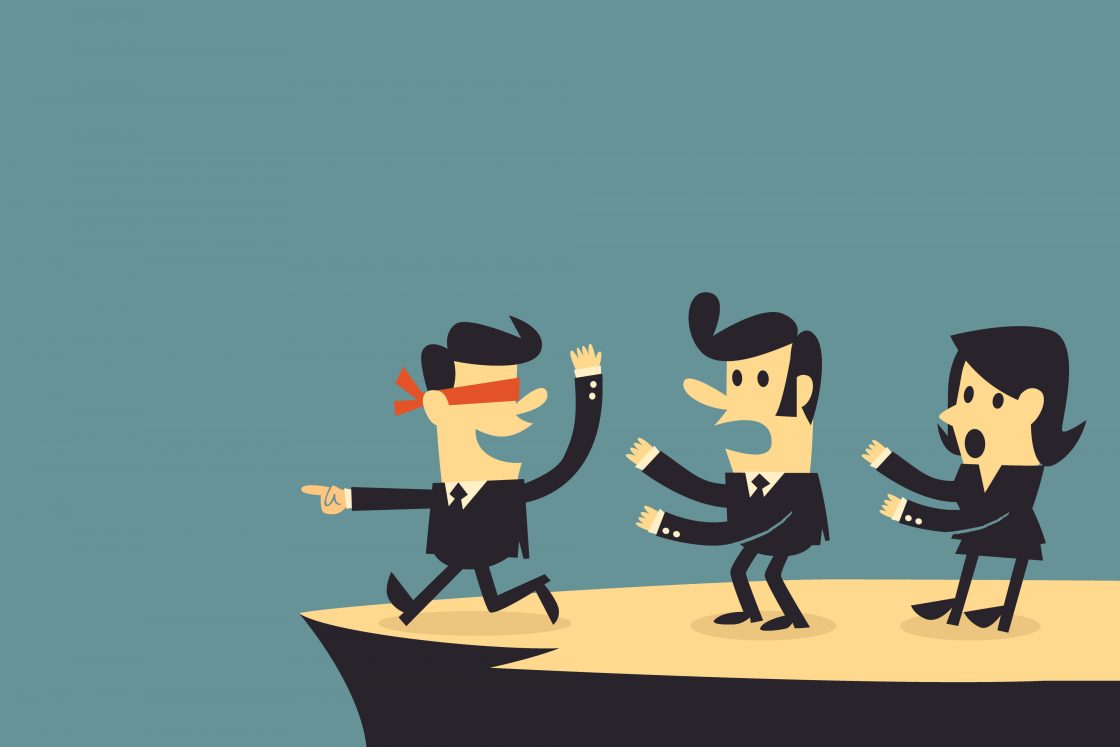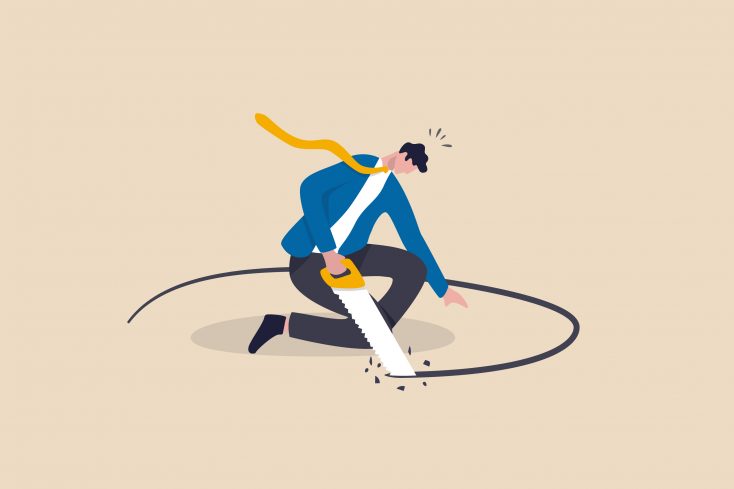Have you ever noticed that looking down from the top of a tall building seems farther than looking up at it from the bottom? Likewise, looking up at skyscrapers usually isn’t scary, while looking down from the top can evoke panic.
In fact, people in experiments conducted by Jackson & Cormack (2007) judged the same vertical distance as being an average of 32% farther when looking down, as compared to looking up. Why does this happen? In sum, the researchers theorized that “height overestimation” evolved to protect people from falls. In other words, it appears to be an innate survival mechanism in the brain.
So how does that apply to your judgement? Good decision-making requires accurate perception of the situation, the facts, and potential outcomes. Yet the results of Jackson and Cormack’s experiments evidence that our brains can skew our perception, without us even realizing it. And not just a little bit – 32% is a HUGE shift in judgement! Especially for decision-makers with responsibility for others’ lives, like physicians, pilots, and public-policy makers, misperceiving reality can result in catastrophe.
But is there any scientific evidence that our brains skew perception to protect us from other dangerous situations (other than falling)? Yes – in studies of social conformity.
Doing something that could result in being socially outcast is a dangerous situation. From an evolutionary perspective, being part of a group increases survival – it provides help, protection, etc. – its why early humans formed tribes, and why we still affiliate today.
Thus, it makes sense that our brains can influence us to make decisions that conform with the group majority; it promotes survival. Experiments conducted by Solomon Asch (1951) showed that people will even overlook what they can see with their own eyes (and make incorrect judgments) when faced with disagreement from their peers. And results from brain imaging experiments conducted by Berns et al. (2005) affirmed that brain regions associated with perception can be altered by peer pressure.
In sum, there’s ample evidence that your brain can step-in and “hijack” your perceptions when decision-making, at levels below your conscious awareness.
Yet, not all of the people in the aforementioned studies had their perceptions change, or at least not to the same degree. This suggests that some people are more resilient to “hijacked” decision-making than others – thus, I call it: having decision resilience.
As a Business Psychologist, I define decision resilience as how much a person’s decision-making can be swayed by innate survival mechanisms (like social conformity). For example, having higher decision resilience suggests lower susceptibility to decision-sway. And when helping companies choose the best leaders, I believe it’s essential to ensure they are selecting the best decision-makers.
So, is there a way to measure decision resilience? Yes – I’ve developed an assessment called The Decision Resilience Instrument (DRI). It’s administered online, and takes about 25-minutes to complete.
If you’re interested in the Decision Resilience Instrument, please email me, Dr. Gary Dumais, at garydumais@gmail.com
References:
Asch, S. E. (1951). Effects of group pressure upon the modification and distortion of judgments. In H. Guetzkow (Ed.), Groups, leadership and men; research in human relations (pp. 177–190). Carnegie Press.
Berns, G. S., Chappelow, J., Zink, C. F., Pagnoni, G., Martin-Skurski, M. E., & Richards, J. (2005). Neurobiological correlates of social conformity and independence during mental rotation. Biological psychiatry, 58(3), 245–253.
Jackson, R. E., & Cormack, L. K. (2007). Evolved navigation theory and the descent illusion. Perception & psychophysics, 69(3), 353–362.




